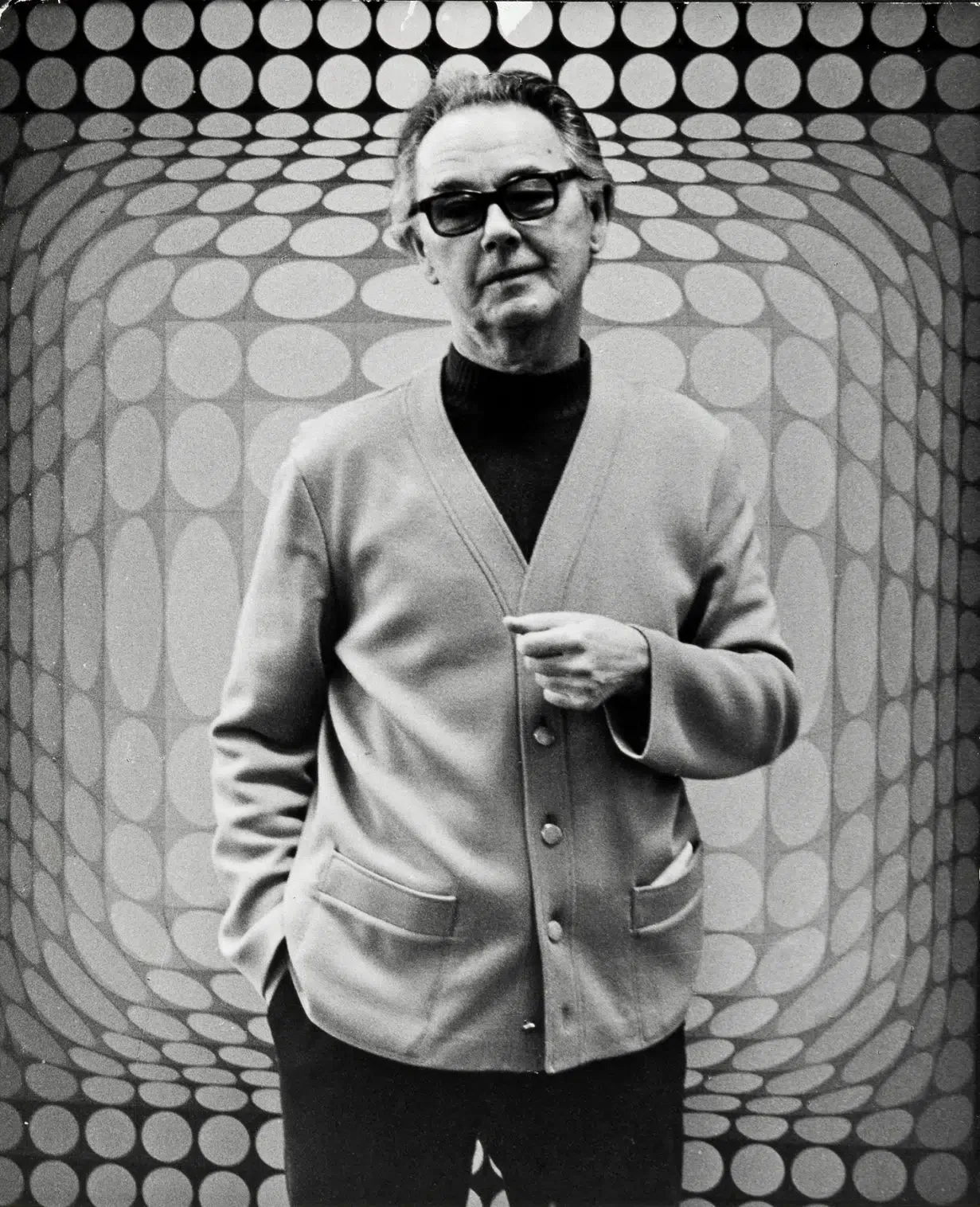
Victor Vasarely (1906–1997) was a Hungarian-French artist widely regarded as the father of Op Art, a movement that explores optical illusions through geometric abstraction. Born in Pécs, Hungary, Vasarely initially pursued medical studies before shifting to art, studying at the Műhely Academy in Budapest, which was influenced by the Bauhaus. In 1930, he moved to Paris, where he worked as a graphic designer and began developing his distinctive style. His early work, such as Zebra (1937), is considered a precursor to Op Art, featuring black-and-white patterns that create a sense of movement. Vasarely's art evolved to incorporate vibrant colors and complex geometric forms, leading to his renowned "Vega" series, which gives the illusion of three-dimensional bulging spheres on flat surfaces. He believed in democratizing art, aiming to integrate it into everyday life through architecture and public spaces. His legacy includes the Fondation Vasarely in Aix-en-Provence, France, dedicated to his work and vision of a "plastic alphabet"—a universal visual language based on geometric forms and colors.
To provide the best experiences, we use technologies like cookies to store and/or access device information. Consent to these technologies will allow us to process data such as browsing behavior or unique IDs on this site. Not consenting or withdrawing consent may negatively affect certain features and functions.
Market reports for visionary collectors and insiders.